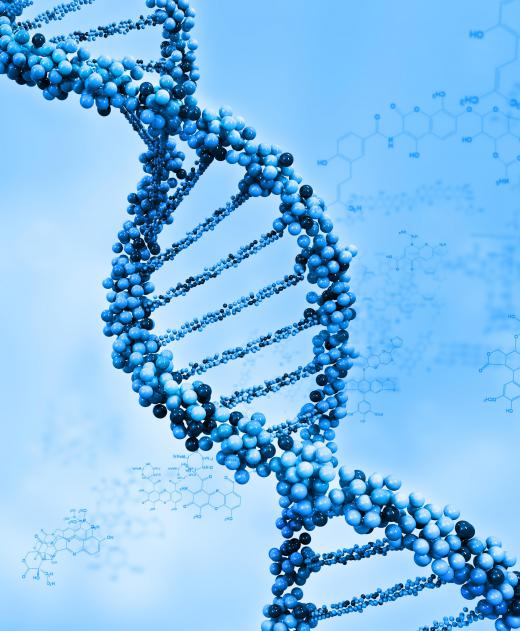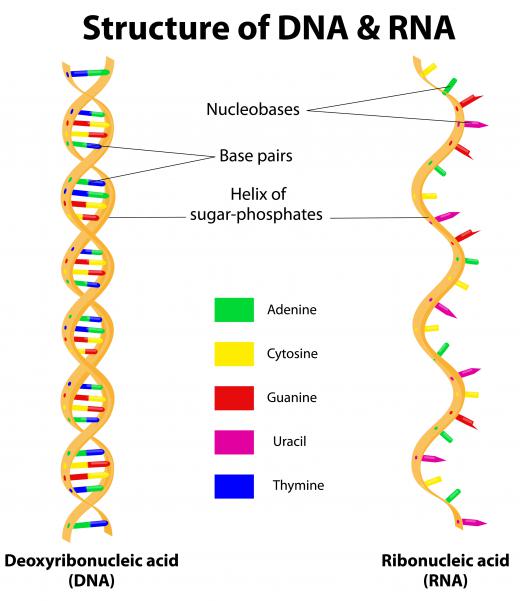What Is RNA Concentration?
 Mary McMahon
Mary McMahon
Ribonucleic Acid (RNA) concentration is a measurement of how much of this genetic material is present in a sample. This nucleic acid is one of the important building blocks of life, critical to functioning for organisms from whales to house cats. It may be analyzed in testing for a variety of reasons, including diagnostic purposes, research, and forensic analysis. Before it can be tested, it needs to be carefully processed and checked to confirm the sample is of good integrity and will yield accurate results.
In processing, technicians extract RNA from a sample so they can analyze it. This can involve treatment with enzymes that remove Deoxyribonucleic Acid (DNA) and proteins that may be present in the sample. Careful controls are necessary to limit the chances of contamination and preserve as much RNA as possible. Specialized glassware and laboratory plastics may be used for this process, and technicians also follow a standard lab procedure for consistency.

The classic approach to measuring RNA concentration involves running a sample through a spectrophotometer, a device that measures light absorption. Readings can provide information about how much RNA is present based on how much light in specific wavelengths is absorbed. This can also indicate whether contaminants are present in a sample, because other materials absorb light in different wavelengths. Thus, the test can perform a dual function by quantifying the RNA and assessing it for contamination.

Another option is to add a dye to the sample and expose it to light to see if the dye fluoresces, and how intensely. Dyes can bind tightly to nucleic acids to provide information about their concentrations. One flaw with this method is that RNA concentration values may be off if the sample also contains DNA or other impurities, as the dye may bind to these as well. Technicians may only use this option to determine RNA concentration if they are confident the sample is very pure to avoid obtaining false results.

If the RNA concentration is too low, the sample may not be usable. There might not be enough to run tests and double check the results, for example. An increased possibility of error may also be a concern, because problems with the sample would be magnified if only a limited amount of RNA is available. The technician might need to purify a new batch or request a fresh sample, if this is an option, to determine if it’s possible to obtain a cleaner sample with a higher RNA concentration.
AS FEATURED ON:
AS FEATURED ON:














Discuss this Article
Post your comments